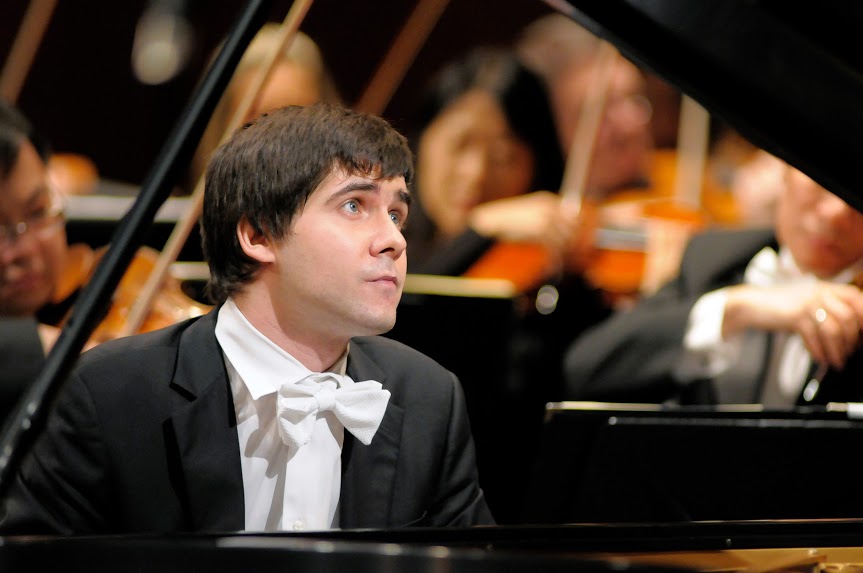Music director Miguel Harth-Bedoya broke some of the standard-practice rules of programming for this weekend’s concerts of the Fort Worth Symphony—and in the process came up with a thrilling evening for music-lovers who braved Friday night’s storms to travel to Bass Performance Hall.
Ukrainian-born pianist Vadym Kholodenko, gold medalist of the 2013 Cliburn Competition, provided the most breath-taking moments as soloist for two of the most demanding piano concertos in the repertoire: Prokofiev’s Fourth and First. This performance was part of a multi-year collaboration of Kholodenko and the orchestra, including live performances of all five of Prokofiev’s piano concertos, to be released on disc by harmonia mundi sometime following the final performance in the cycle next March.
The project has proven to be successful on several levels, broadening the horizons of an audience already familiar with the ever-popular First, Second, and Third Piano Concertos of Prokofiev to include the less-well-known Fourth and Fifth works in the composer’s cycle. At the same time, the cycle has proven to be a remarkably successful vehicle for Kholodenko’s versatile pianism. While the young Ukrainian can produce velocity, volume, and tone on a magical level, he at the same time demonstrates a total command of the structure and spirit of these works and a unique insight into the music of Prokofiev.
The Fourth Concerto, written with a piano part to be played entirely by the left hand, opened the concert. Commissioned by Paul Wittgenstein, who lost his right arm in World War I, this difficult work, while not likely to become part of the standard repertoire (largely because of the technical difficulties it presents), is nonetheless a remarkable symphonic work, presenting the composer at his cosmopolitan best, complete a majestic set of variations in the Andante movement, reminiscent of similar sections in the Second and Third Concertos of Prokofiev.
After breezing through this technical marathon, Kholodenko left stage briefly before returning for the Piano Concerto No. 1, a musical tornado in which the twenty-year-old Prokofiev reinvented the romantic concerto and brought it head-long into the twentieth-century, crowning a non-stop barrage of technical challenges with one of those heartbreakingly beautiful musical sunrises Prokofiev loved to create.
Virtuosity of this sort tends to steal the show, but Harth-Bedoya and the orchestra, who had collaborated handsomely in the two often complex concertos, regained the spotlight after intermission with another programming outlier, Arnold Schoenberg’s orchestrated version of Brahms’ Piano Quintet in G minor. Brahms would likely have been either flabbergasted or amused at the inclusion of a xylophone in the orchestra—not to mention the thickening of his pristine chords—but the effect was unfailingly engaging. The more casual listener could certainly appreciate the sheer beauty, grandeur, and liveliness of the music, while the connoisseur could ponder the unique effect of Brahms’ music rethought with post-romantic orchestration.





